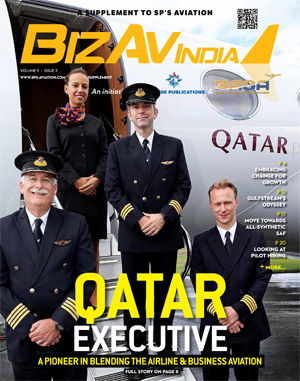Innovation Intensifies
Electric aircraft and advanced air mobility were among the most-talked about topics at the show this year

EBACE 2022 is about looking beyond the current state of aviation to what the future holds for the industry. Electric aircraft and Advanced Air Mobility were among the mosttalked about topics at the show this year.
Leaders from some of the world’s foremost Advanced Air Mobility (AAM) developers expressed their confidence that battery technology advances will continue, regulatory hurdles will keep falling and consumer demand will be there for flights that shuttle people within and between cities. In some cases, flights could be available in a handful of years. The companies also ensured that going ahead, AAM and electric vertical takeoff and landing (eVTOL) aircraft would be as safe as commercial aviation, given the redundancy of technology, and the costs will also eventually come down.
Christian Bauer, the Chief Operating Officer at Volocopter, which is also hoping to fly in Paris for the 2024 Olympics, said the certifications needed from European regulators are clear and “that gives us the opportunity” to plan with partners and determine. He said the goal has to be an aircraft that is cheaper than a helicopter and as safe as commercial aviation.
Sebastien Borel, Vice President Business, Lilium, which is looking to develop regional service between cities, was confident consumer demand would be strong, for instance because eVTOL aircraft can land in many places, including on top of parking garages and atop buildings. Another advantage highlighted by Bauer was that the aircraft can fly into the center of cities, rather than needing to stay on the edges of cities like helicopters.


Diana Cooper, Global Head of Policy and Regulations at Supernal, said, “Developers hope to get their regulatory certifications validated across the world because companies intend to operate in multiple markets. Supernal is exploring Los Angeles, CA, and recently entered into an agreement with Miami, FL’s Mayor to begin there, said the company, which wants to operate worldwide. Battery technology advancements will continue and the company will be able to meets its goal of launching in 2028.”
Integrating the infinite flexibility and near-zero pollution promises of Advanced Air Mobility (AAM) with today’s aviation infrastructure will require education, negotiation and patience – perhaps a decade or more, noted experts at EBACE 2022. Hundreds of companies are developing AAM products, said session moderator Adam Twidell of OneSky. All of them face not only the challenge of certifying a new breed of aircraft, but of finding customers who will be able to operate those aircraft in ways that are different from today’s operating environment.
“We’re creating a new industry,” said Damian Kysely, EMEA Infrastructure Chief at the UK’s SkyPorts, which sees AAM aircraft displacing helicopters. The company is building a network of vertiports in London, with others planned, and a demonstration project well underway in Singapore.
INTEGRATING THE INFINITE FLEXIBILITY AND NEAR-ZERO POLLUTION PROMISES OF ADVANCED AIR MOBILITY (AAM) WITH TODAY’S AVIATION INFRASTRUCTURE WILL REQUIRE EDUCATION, NEGOTIATION AND PATIENCE
Bernhard Fragner, Founder and CEO of charter operator GlobeAir added, “This is the next big thing. We have to do something to get people away from the large aircraft. Passion can drive a lot of things; I’m absolutely convinced that we’ll succeed.” However, real AAM deployment is more than a decade away, and likely more like 15 years out and beyond the passion we need people on the ground which requires time and hence there will be quite a long transition phase, Christophe Lapierre, Group Head of Strategy and President of Business Aviation Support Services with Luxaviation highlighted.
Coordination with the existing air traffic control infrastructure is also critical. “ATC personnel can put existing aircraft into holding patterns, which won’t be possible with short-range AAM craft. The digitisation of aviation needs to continue at a very fast pace,” said Diego Magrini, Founder and CEO of data specialist aviowiki.
The experts also underlined that AAM depends on coordination between not only aircraft developers but energy companies and infrastructure developers, and that integration is crucial to establish this side of the industry and see it flourish.





